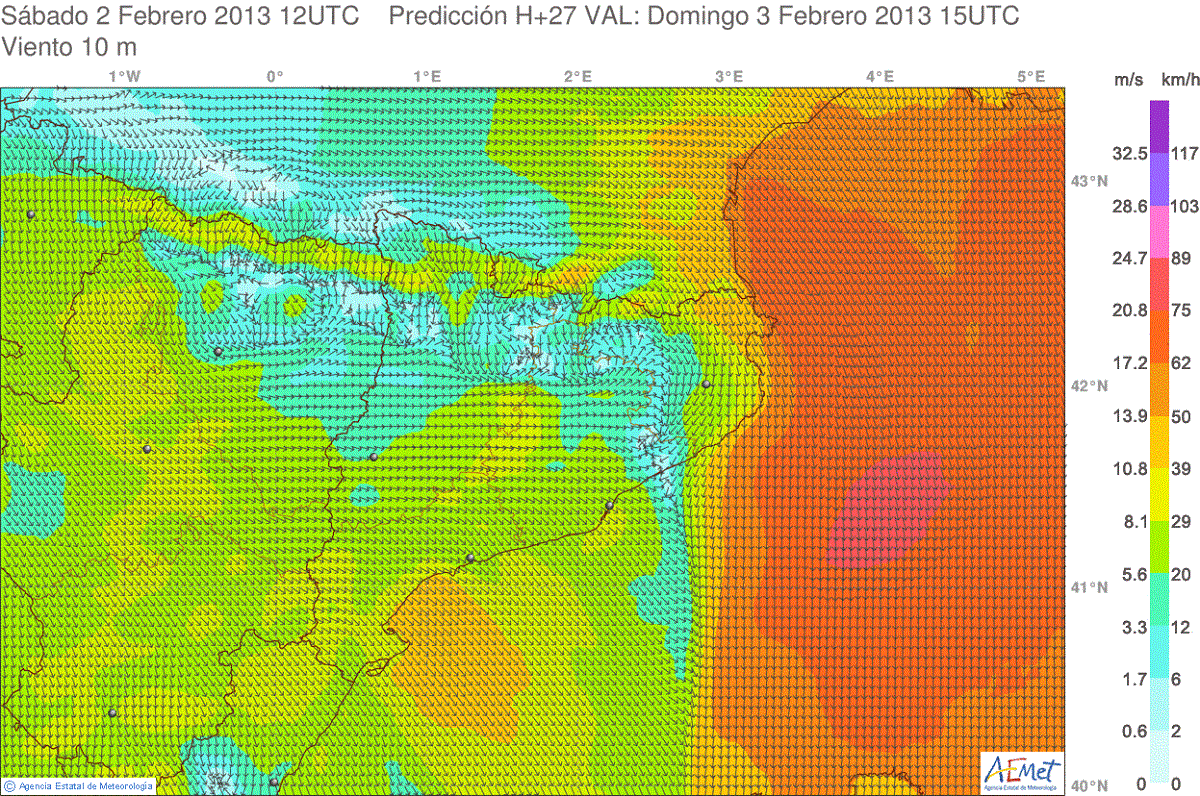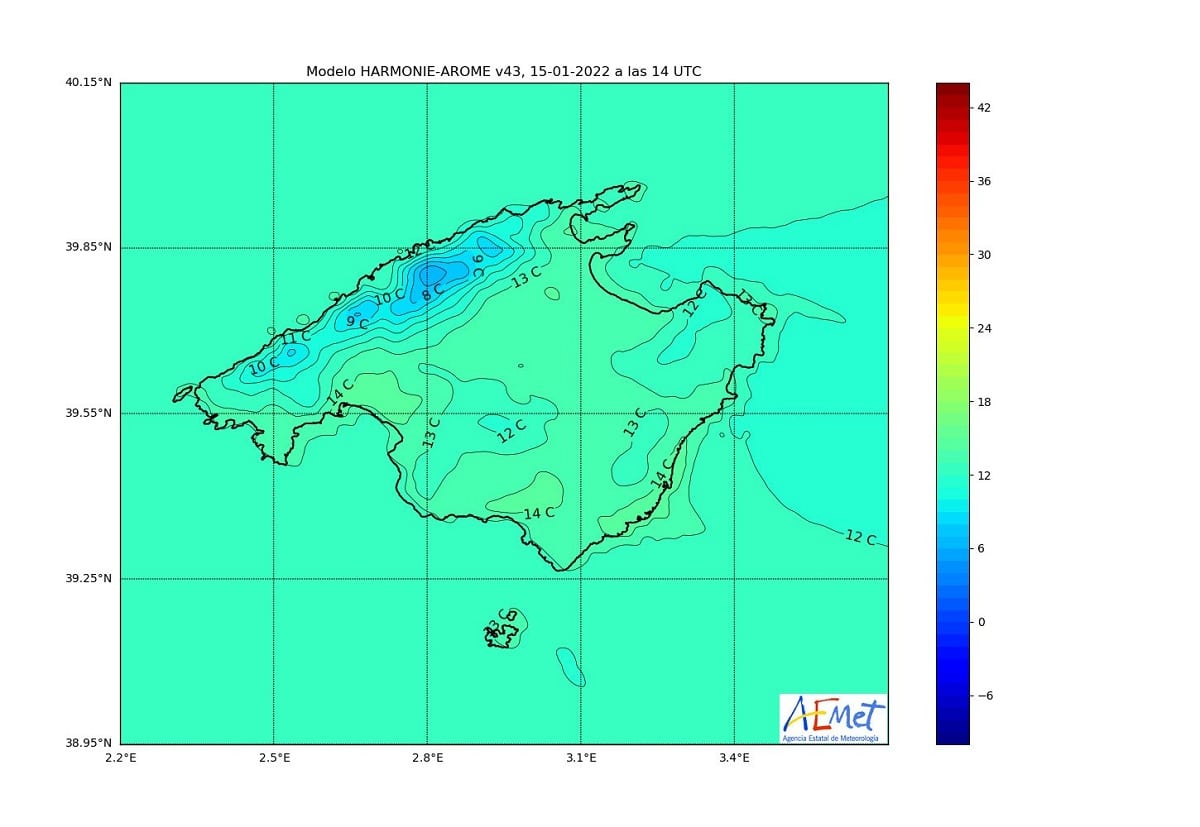
Since June 1, 2017, AEMET has been running the Harmonie-Arome finite area numerical model, which will progressively replace the HIRLAM model. For this reason, this new model was published on an external website, and from then on, the AEMET website completed the output of the Deterministic Numerical Model of the European Center for Medium-Term Forecasting (CEPPM). The Atlantic region, which also covers most of Europe and the northern and southern hemispheres as of D+0. These new products make possible again the visual vision that became obsolete with the incorporation of the harmonie model and inhibition of HIRLAM ONR.
In this article we are going to tell you what the Harmonie model consists of, what it is for and what its benefits are.
Harmony model

The output of the different variables is shown every 6 hours, from 12 to 132 hours relative to the model channel, running twice a day at 00 and 12 UTC (one hour less than the peninsular local time in winter and two hours less in summer).
The variables displayed are the following:
Area:
- Precipitation in the first six hours
- Pressure at nominal time (displayed by default)
- Temperature at rated time
- Cloudiness at nominal time
- Wind at nominal hour
For an isobaric surface of 850 hPa (equivalent to approximately 1,5 km altitude on average):
- Temperature and Potential in the same figure
- For an isobaric surface of 500 hPa (about 5,5 km):
- Temperature and Potential in the same figure
- For an isobaric surface of 300 hPa (about 9 km):
- Wind and potential in the same figure
Regarding the hemispheric regions, northern hemisphere and southern hemisphere, from 12 to 132 hours of the model's nominal time, presenting departures every 12 hours, for 00 and 12 UTC, the following variables are passed:
- surface pressure
- Isobaric surface potential of 500 hPa
Advantages of the new Harmonie model

The Harmonie-arome model is a non-hydrostatic mesoscale model that allows the simulation of convection. As for the HIRLAM limited area model, that has been working in the INM-AEMET for 25 years, has made great strides, not only for its higher resolution, but especially for the simulation of convection and its associated effects (rain, strong winds, hail, electric discharge). But that is not the only advantage of Harmonie-arome, it is also a particularly good model for the prediction of temperature -variable at a very local scale- and predictions of fog and low clouds, and other topography-dependent phenomena, obtained in the Harmonie model have improved and correlates with the HIRLAM and CEPPM models and therefore better fits the real models.
download prediction

The web also includes flow forecasts from the HARMONIE-AROME model, in addition to those available since June 20, namely: pressure, temperature, wind, maximum gusts, precipitation and cloud cover. The discharge product is a post-processing based on the content of «graupel» (snow hail or small hail) in the convective cloud, adapted to the discharge climate of Spain. The value of the scale is rays/km2, integrated in one hour or in three hours. That is, it is the number of lightning strikes likely to strike within that time interval within an area of one square kilometer.
On July 6, 2017, AEMET held a showcase of the new Harmonie-arome at AEMET, in which its most relevant properties and the improvements already achieved were explained into products that can be used to predict adverse weather events and aviation.
This model has a horizontal resolution of 2,5 km. It belongs to a new generation of non-hydrostatic models that explicitly solve for deep convection. In addition, it represents a significant improvement in local forecasts, especially in regards to the following variables: precipitation, heavy rain, wind, temperature and fog. The development of such a complex model can only be achieved through international cooperation.
The prediction applications developed in AEMET based on this model are also described: Harmonie-arome field used in AEMET operations, field of interest for convective situations, which is the strength of non-hydrostatic models, atmospheric sounding model for Harmonie-arome prediction, New Fields and other applications available at AEMET's external website for external users and future development.
In addition, comparisons between the Eurocentre and Harmonie-arome models are shown, and how forecasters can use the new Harmonie-arome fields in operations, such as lightning, hail, or reflectivity.
Finally, AEMET's ongoing work is presented to obtain a 2,5 km Probabilistic Prediction Model (AEMET-SREPS), which will soon be available on the AEMET website and which will complement deterministic predictions with probabilistic predictions. Subsequently, a Harmonie-arome implementation plan was presented at AEMET, including multiple successive phases of compliance.
Reviews
Javier Calvo, head of the agency's modeling area, explained that great improvements must be made, accurately predicting rainfall and "most importantly, the quality of the collecting organisms, whether they are snow water or hail" and their intensity " , that is, if they are powerful “This is because the model is 'non-hydrostatic', that is, it better captures vertical movement”, he commented. «Not only is the predicted intensity more accurate, it is also more spatially accurate.«, that is, the location of the phenomenon, specified the modeling leader.
Among the services launched as a result of the model is "MeteoRuta", which is now available on the AEMET website, where external users can consult the weather on the road, according to the person in charge of the forecast technologies and applications area .
Jesús Montero, Head of Production at AEMET, reported on the implementation phase of the model, explaining that the model was made available to users on the web. As the experts insist, «Harmonie-Arome» it is a model “so complex that it cannot be developed by a single country«, so the model was created by technicians from a total of 26 weather stations in different countries in Europe and North Africa.
I hope that with this information you can learn more about the technology of the Harmonie model of weather forecasting.